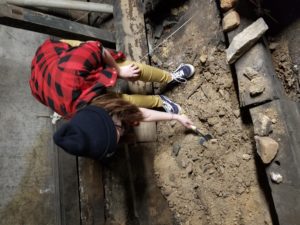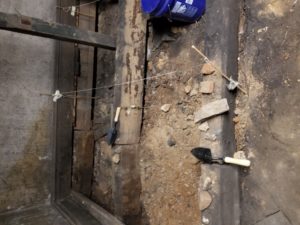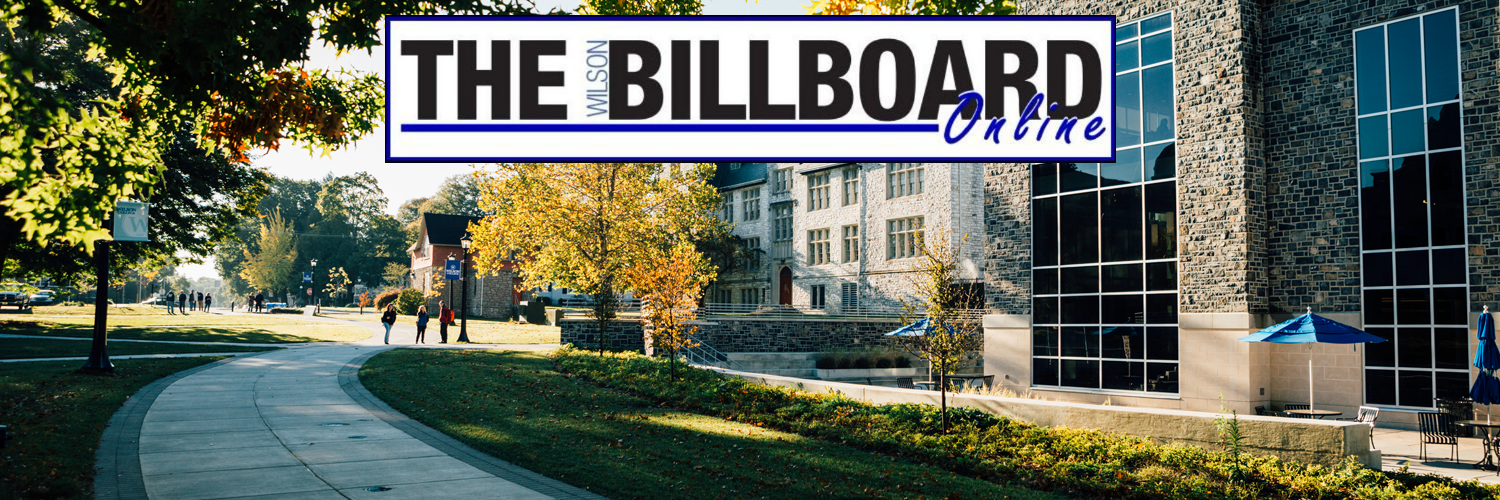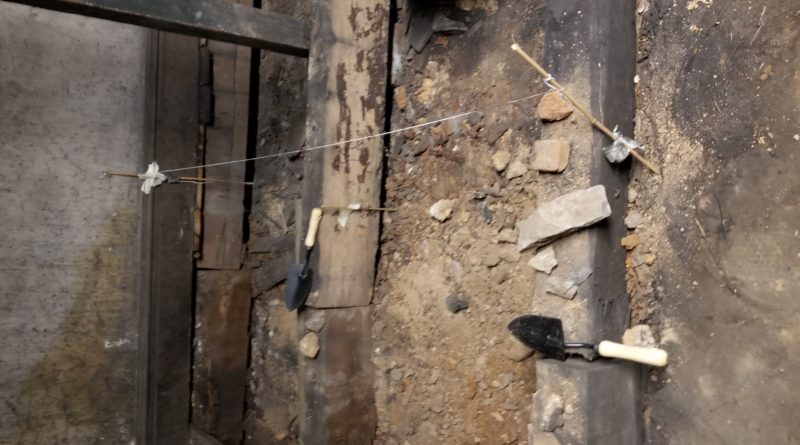Archaeology Students Begin Excavation Project at Local Church

Photo by Olivia Shirk
On November 5, a few archaeology students in Professor Rock’s class went with her to meet a representative of the Trinity Episcopal Church about a possible excavation. The church, established the same year Wilson opened its doors, is also about to celebrate its 150th anniversary. When attempting to renovate the basement in the parish house beside the church, they found oyster shells and bones of an unknown origin. They contacted the historical society in Chambersburg, who put them in touch with Dr. Rock.
Archaeology students were given the chance to get some hands-on experience by going over to the parish house basement and observing, which used to be a street-level home during the time of the Civil War. Students are currently conducting a study on all aspects of the history of the parish house, including the history of the house’s land, previous owners of the home, the reasoning behind the bones and oyster shells, and more.
Dr. Rock took the bones back to Wilson to be identified by another professor. She sought out the help of Dr. Bates from the Veterinary Medicine department, and he was able to pinpoint the bones to be likely that of cattle or horses, which coincides with the historical placement of the parish house.
The class and Dr. Rock are collaborating on this project across campus and within the community, working with Kelly Spiese from the library on research, Kieran McGhee from the Hankey Center for archival information, and the Chambersburg Historical Society is generously offering their time to assist the student research.
Sharon Holoviak and the church are very excited to have the students research the parish house. As mentioned before,The Trinity Episcopal Church and Wilson College opened their doors in the same year in 1870 (the charter for Wilson was signed in 1869, but classes began the fall of the following year). This project seeks to unite the community in a more engaging way.

Photo by Olivia Shirk
On top of the historical research, some students are delving more into the scientific aspects of their research. The group working on the significance of the oyster shells have recently found that oyster shells and bones were commonly used as a sort of filler for raised levels in a house. Other groups are looking into the society of the time period, in particular, the original owner of the house who had it built on the original lot, Samuel Seibert.
The church and the class are very excited about the project which will be completed around or on December 13. A display will help educate the community and create a positive impact on the town.

